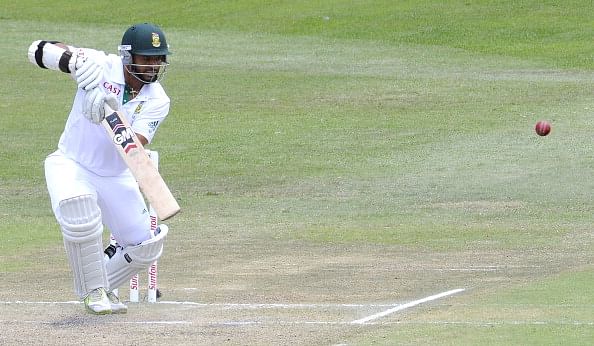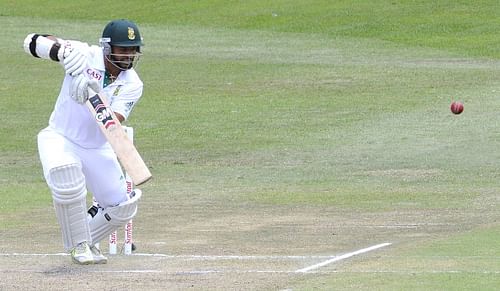
Ashwell Prince: The wall of South African cricket

Ashwell Prince has been the wall of South African cricket for a decade
It has not been a good season for South Africa. Graeme Smith retired after the third Test against Australia and now Ashwell Prince has announced his retirement from the game. Though Prince didn’t play for South Africa since 2011, he has been a great cricketer for them especially in Tests.
He had perfect technique for a batsman in Tests. He adjusted his game plan according to the situation. He had good support from Jacques Kallis and Hashim Amla which made his work a little easier. Also when the top order collapsed, Prince was the savior for South Africa. He had taken South Africa out of trouble on many occasions and thus South Africa were able to win tricky matches. He also has a good record in Australia where he scored 205 runs in 3 Tests, with the best of 119. This clearly tells that Prince acted as a bridge and always pulled South Africa out of trouble.
Right from his first Test, Prince was calm and never hurried to get the runs. When he made his Test debut in 2002, he scored a patient 49. At the time, South Africa had quality stroke makers – Smith, Gibbs, Dippenear, McKenzie, and Cullinan. So, Prince didn’t make a mark in his innings of 49.
He subsequently went through a lean patch as he struggled against mediocre Bangladesh and Zimbabwe. Perhaps he didn’t fancy the slowness of the wicket in Bangladesh. The spinners played a key role for Bangladesh, and Prince was unable to predict which way the ball would turn. But that’s not an excuse. He had good backfoot shots and therefore he should have made an impact in Bangladesh.
Thereafter, like most of the cricketers who have been dropped from their sides, Prince started playing domestic cricket. He worked on how to apply the backfoot shot against the spinners. He also learnt how to pull the ball against the spinners. He had the technique to handle spin, but didn’t know how to apply it. But after the domestic season, Prince turned out to be a wonderful batsman for the Proteas. His maiden ton against Zimbabwe and 131 in West Indies stands out as Prince best centuries.
As stated earlier, he had a good record in Australia. His technique suited the Australia pitches where the surfaces provide both pace and bounce. He had the ability to adjust his footwork. He had some good backfoot technique which helped him to score runs in Australia. He tackled the Aussie pacers well, but once again faltered to the spinners. He was unable to read the length of Shane Warne and wasn’t sure which way the ball would go.
The important part was that Shane Warne brought in a lot of variations which made things tougher for Prince. He had been dismissed by Warne 11 times. At the time, he was pre-meditated to Shane Warne which cost him in Australia. He, thereafter, learnt how to handle spinners like Shane Warne and then went on to have a successful Test career. The conclusion that be drawn from this is he was a quick learner which helped him to succeed in a short span. His maiden ton in Australia came up in Sydney where he scored 119 and batted with ease along with Kallis.
His style, however, wasn’t suited to one-day cricket. Even Prince spoke about this: “If I look back at my one-day career my strike rate is probably a bit low [67.77] but then when I was selected in the team I was given a specific role. I would only bat if the team was 60 for 3. If we were 160 for 3, guys like [Justin] Kemp, [Mark] Boucher, or [Shaun] Pollock would bat. My role was to make sure we recovered when we were in trouble and if that’s your role you can’t strike at 100”.
He was in and out of the squad. He played in 2007 World Cup, but didn’t have a good strike-rate. CSA then realized that his style of play suited to Test cricket. It was clearly evident from the innings he played in England. 101 in the first innings at Lord’s and it was followed by a brilliant 149 at Headingly. The conditions were tough to bat. There was more assistance for the English pacers, but Prince remained calm and played a brilliant innings.
In general, a batsman would have a tough phase where he would have lost his touch. His form would have been patchy. But that was not the case with Prince. After returning to the Proteas Test squad in 2004-05, Prince never lost his touch and continued his good form till the home series against Australia in 2009 where he scored 150. Thereafter, Prince career was hit with injuries and thus he was unable to regain a place in the squad.
To conclude, Prince acted as bridge for South Africa for a decade. He has taken the Proteas out of trouble on many occasions. He has been the most consistent batsmen for South Africa in Tests. Will South Africa be able to find a batsman like Prince to fill his place? With Jacques Kallis also retired, South Africa have a lot of voids to fill before the tough overseas tours.